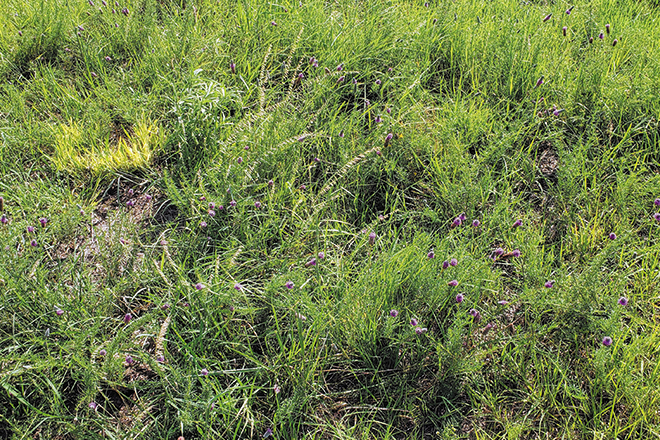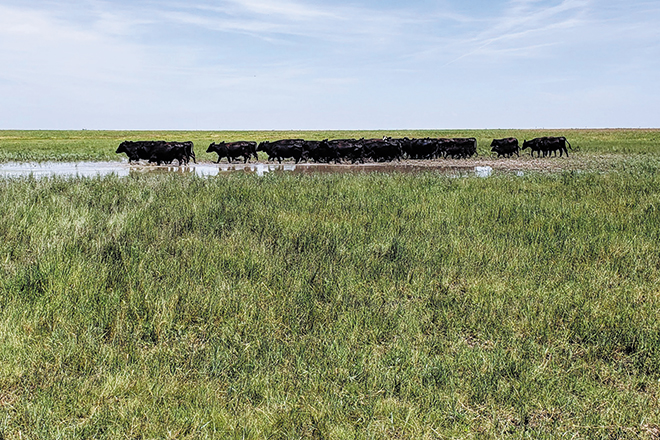 Sometimes taking a bird’s-eye view is what’s best for the birds and for the land
Sometimes taking a bird’s-eye view is what’s best for the birds and for the land
By Brittany Smith
Regarding that title at top: When you hear the word “holistic,” perhaps you think of herbal remedies … healing crystals and concoctions that veer dangerously close to “woo-woo” territory.
Have no fear.
I am not suggesting you start hanging amethyst and moonstone in your deer blind or ponder your pointer’s daily horoscope before you hit the field. “Holistic” in the upland habitat sense just means considering all the parts of a whole system to make better-informed management decisions.
People often fall into the trap of compartmentalizing how they think about habitat management regarding different parts of their property. Sometimes this might mean thinking about their wetlands independently from their uplands. Other times they may be managing their cash crop acres, Conservation Reserve Program (CRP) acres, and pasture or rangeland, separately without ever taking a cohesive look at the landscape as one whole picture.
If we take a step back and attempt a bird’s-eye view (Google Earth is a particularly helpful tool for this), we can begin to understand things that aren’t necessarily obvious at ground level. Perhaps our corn food plot isn’t having the impact we intended because it is located in a tract which happens to be surrounded by several sections of field corn. Or, more often, we’re simply overlooking small changes we could make which could collectively create a big impact for wildlife.
To start down the path of holistic habitat thinking, objectively evaluate what you have and what the limiting factors for the species you’re targeting in your neck of the woods might be. If we can identify what’s lacking at the landscape level, we can then begin to identify opportunities to add those missing elements back into our management strategy.
The two most often overlooked factors for pheasant success in my area are nesting cover and brood cover, so I generally encourage anyone looking to increase bird numbers to look for ways to provide more of both on their property.
 Above: Prime brood-rearing cover for upland birds.
Above: Prime brood-rearing cover for upland birds.
That said, “more” doesn’t necessarily always simply mean increasing acres in perennial cover. That isn’t always the best or most practical answer. “More” also extends to increasing habitat quality and providing additional connectivity to other pockets of habitat as well.
For example: If there are a few CRP fields near a center pivot, enrolling your pivot corners into a bird-friendly CRP practice can offer birds a corridor connecting them to more resources, thereby improving breeding conditions and reducing chick mortality rates through the growing season. This means more birds for everyone to hunt in the fall.
As an added bonus, putting any negative-ROI pivot corners or other areas into a conservation program can be beneficial to land’s bottom line as well as the birds! Wetlands in cropfields fall into this same category. Enrolling wetland pockets into CRP or another program can have a huge impact for wildlife even if the tracts are as small acreage-wise, plus you avoid wasting the inputs of time, fuel, seed and fertilizer.
Looking for strategic grazing opportunities can also be beneficial for both habitat and your livestock. Many of our playa wetlands in southwest Kansas have issues with western wheatgrass taking over and replacing a more desirable plant community which typically is dominated by vegetation like smartweed, barnyardgrass and sprangletop, all of which provide excellent food resources for ducks and pheasants alike, as well as good structure for escape and winter cover.
 Above: Strategic grazing is good for cattle and wildlife alike on this southwestern Kansas playa.
Above: Strategic grazing is good for cattle and wildlife alike on this southwestern Kansas playa.
Hitting these areas early in the spring when the western wheat is tender, palatable and fairly high in protein can be a good option to help cattle through until warm-season grasses green up, and also set back the wheatgrass and allow those more desirable species to re-establish.
Having a fresh set of eyes assist you with this process can also be really helpful to identify these kinds of strategic opportunities on your property. Your local
Pheasants Forever biologist or
Quail Forever biologist can take a look at things like soil types, existing plant communities and wetland areas, and take into account your current management and future goals to help you come up with a more holistic habitat management plan to get you where you want to be.
Brittany Smith served as a Coordinating Wildlife Biologist and Wetland Specialist for Pheasants Forever before becoming Precision Ag and Conservation Specialist with valued PF sponsor and conservation partner United Sorghum Checkoff.